Segovia: Aqueduct, Cathedral and Alcazar
We spent several days on Madrid because of multiple reasons.
First, we wanted to absorb the capital’s atmosphere and get a good taste of it.
Second, I had the desire to accommodate two day trips from the city.
A good handful of beautiful and historical towns lie within close distance of Madrid. Thanks to the high speed trains, some of these towns can be reached in less than an hour.
I started my days venturing outside Madrid by choosing Segovia, a UNESCO World Heritage city famous for its breathtaking monuments.
However, travel can be synonymous of adventure. When you are up for an adventure, well, a lot of things can happen.
Turns out we decided to visit Segovia on October 12. As many of you know, in the New World, that is when the Discovery of America is observed. The surprising thing, and I say surprising because I wasn’t aware, is that that day is a holiday in Spain too. They celebrate the Spain’s National Fiesta. Go figure!
Well, because of the celebration, a lot of the trains making the Madrid – Segovia route were full. We weren’t presented with many options and ended up choosing a schedule that gave us only 5 hours in the city (including transportation form the bus station to the city center and viceversa).
And that’s not it! Thunder storms were forecasted for the day. Plus, have you seen all those photos I have posted about Madrid’s culinary scene? Let’s say that didn’t settle very well in my stomach.
___
All my worries disappeared when the bus stopped at the Plaza de la Artilleria. Segovia welcomes you with its majestic Aqueduct. This engineering work dates from the first and second centuries. Scholars estimate 25,000 granite blocks, held together without mortar, make up the structure.
I was so stunned by the Aqueduct. I couldn’t believe I was right below a structure that I have seen so many times in pictures.
As much as I wanted to contemplate the Aqueduct for hours, we had to keep moving. We got a map of the city on the tourist center and started to move towards the Alcazar, located on the other side of town.
The narrow streets of Segovia are so charming. The color palette is on the warmth side but brightness still shines through.
There are many interesting architectural features on the Jewish part of town.
There are also several viewpoints from where you can observe the tiled roofs and the open spaces surrounding the city.
At a given moment, the cupolas of the Cathedral start to peek through the slender alleys.
The streets open up to accommodate the Plaza Mayor. The views in here are dominated by the massive Cathedral. This Gothic masterpiece, consecrated in 1768, had 18 chapels and has three doors.
The structure is so big that you have to walk around to see the tower.
Even though the Cathedral deserves a lot of attention, I think it is advisable to take a look at the other buildings surrounding the plaza.
The slim streets take over again once the Playa Mayor is left behind. After a slight incline, I was happy to see the entrance to the Alcazar.
Many years ago I bought a book titled “Castles of the World.” The Alcazar of Segovia was one of the first structures listed in the book. I think this is when I annotated the Alcazar on my mental bucket list.
Once I was standing in front of the structure, the moment felt surreal.
The Alcazar is a royal palace built on a stone peninsula between the rivers Eresma and Clamores. It is documented for the first time in 1122, although it may have existed earlier and it is one of the most distinctive castle-palaces in Spain by virtue of its shape – like the bow of a ship.
Unfortunately, when walking from the city, you see the Alcazar from behind. In order to see the structure in its entire splendor, you have to see it from outside the city.
After buying our tickets, we proceeded to enter. If the exterior left me breathless, the interior left me speechless. The intricate work on the ceilings was beyond impressive. The tile details were remarkable too. We entered rooms with names such the Hall of Ajimeces, the Hall of the Throne, the Hall of Kings and the Belt Room.
There is an opportunity to get outside and stand on the front of the structure. Towers, gardens and views can be admired from several points. Everything looked so wonderful from up there.
In addition, we bought tickets to go to the top of the John II Tower. The entire city (and the walls) can be admired from this viewpoint. Notice the Cathedral Tower.
Once we were done with the Alcazar, we walked towards our starting point using a different route. We still had time to go to the top of the Aqueduct.
I loved everything about Segovia but I believe the last views were the most impressive ones. The next photo shows how the Aqueduct looks when you are getting ready to ascend.
Once at the top, this is how the structure looks. Those are some amazing views!
Sadly, the time to depart to the train station arrived. I am glad to report I was able to see all the places I wanted and we didn’t see a drop of rain during the entire day. Yes, I felt pretty bad the entire day and a homeless guy asked me to take care of his dog while he go away to bed for money (no kidding!).
This is by no means a comprehensive compilation of the many wonders contained within Segovia’s Wall. It is impossible to condense years of history in one write-up. However, I hope you consider a visit to the city if you are in the area. I think you will not regret it.
Details
- Trains to Segovia depart from the Chamartin Station in Madrid.
- You can reach the Chamartin Station by Metro (there is a stop with that name). Follow the Renfe signs to reach the ticket booth.
- It is advisable to reserve your tickets during high season. There shouldn’t be a problem getting tickets the same day during shoulder and low season.
- The ride on the high-speed train takes about half an hour.
- The train station in Segovia is located in the middle of nowhere. You need to take a bus or taxi to get to the center of town. When in doubt, follow the other people.
- The bus will leave you in Plaza Artilleria (in front of the Aqueduct). Make sure to check the bus timetable. You want to take a bus back to the station at least an hour before the return train leaves. You can leave half an hour before if you take a taxi.
- Try to spend as much time as possible in Segovia. There is a lot to see and do!
- Make plans to have lunch in the city and try the area specialties.
- The visitor center is located right behind the aqueduct. Go there to get a map and find about guided excursions.
Have you been to Segovia?
Pin it for later?


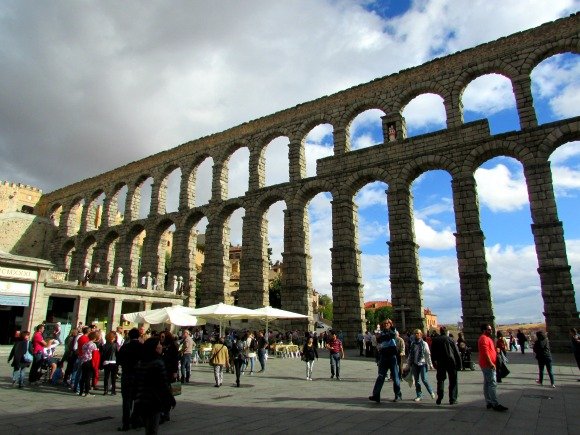

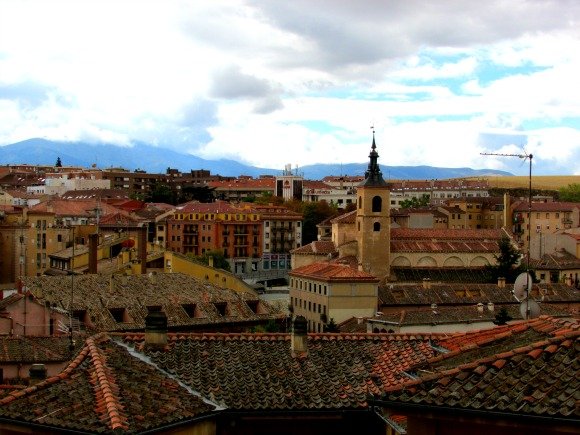
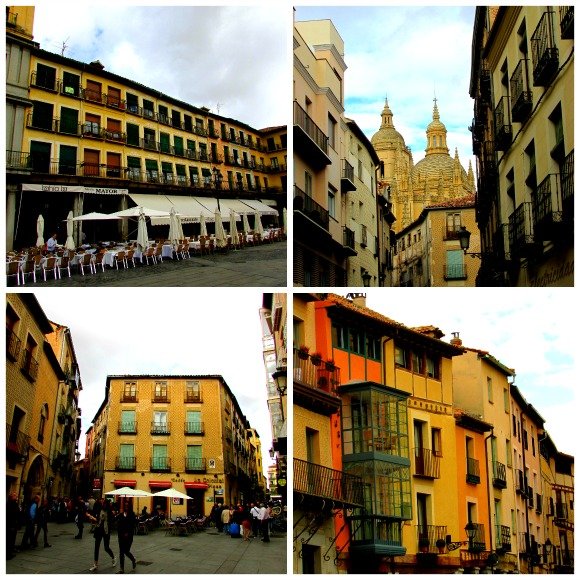






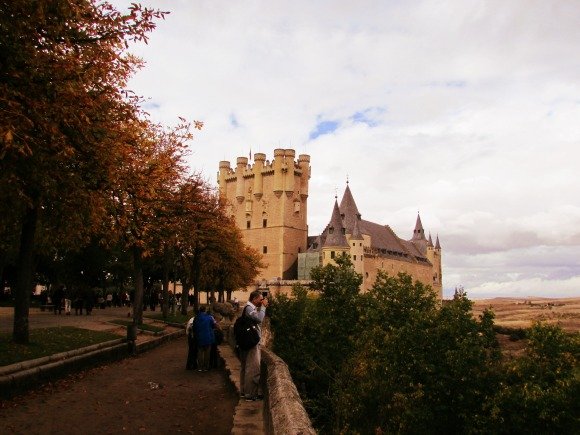
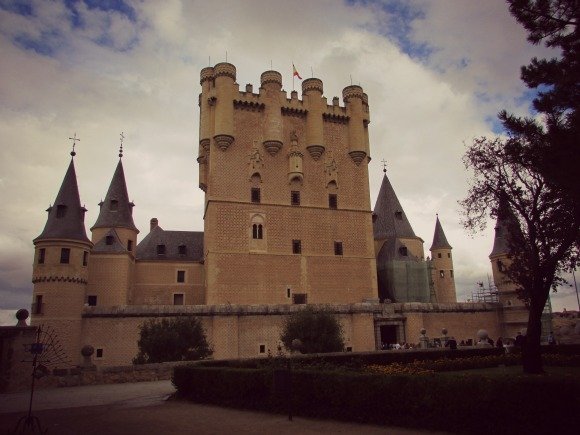


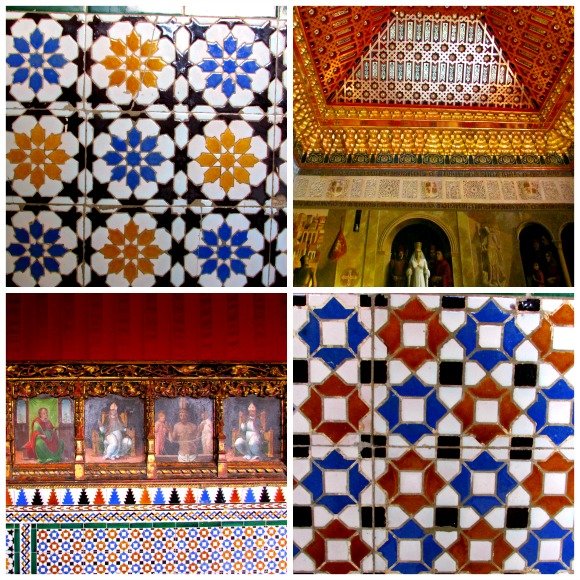

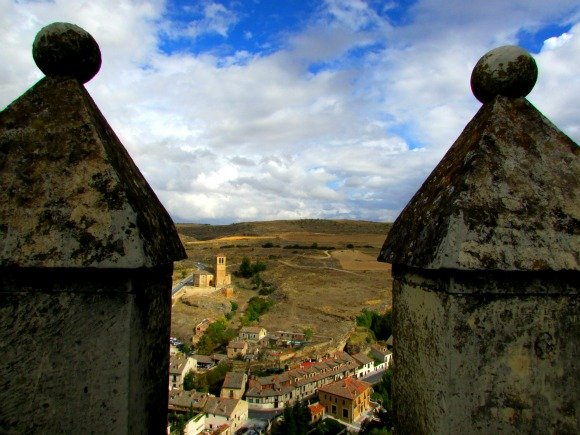
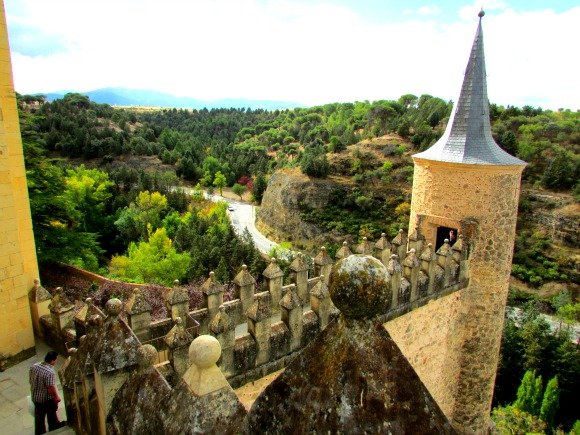



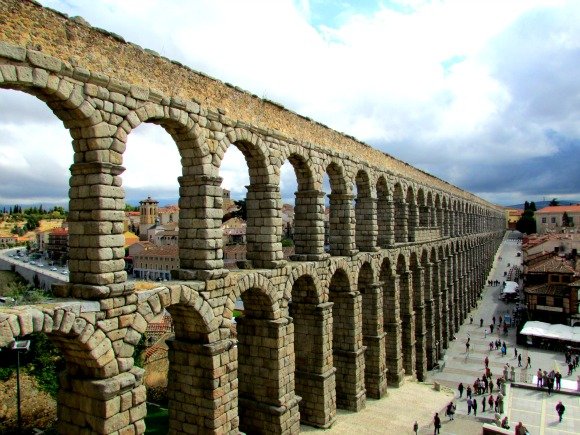


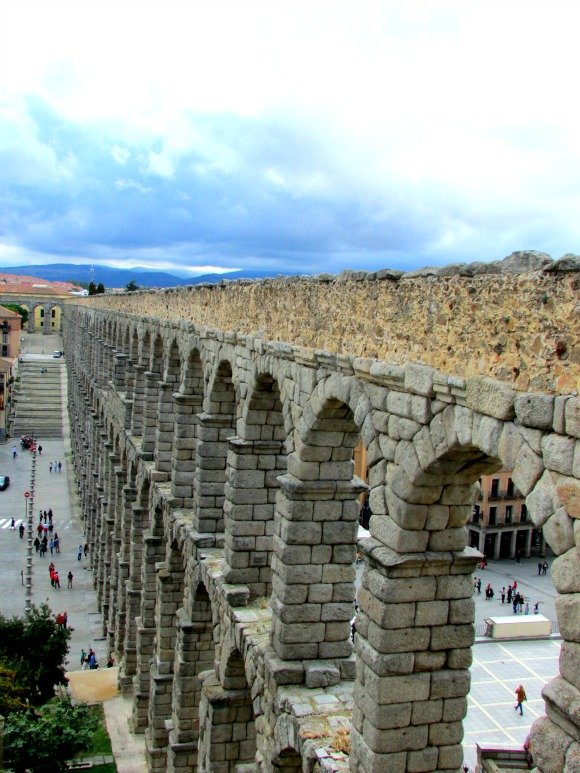
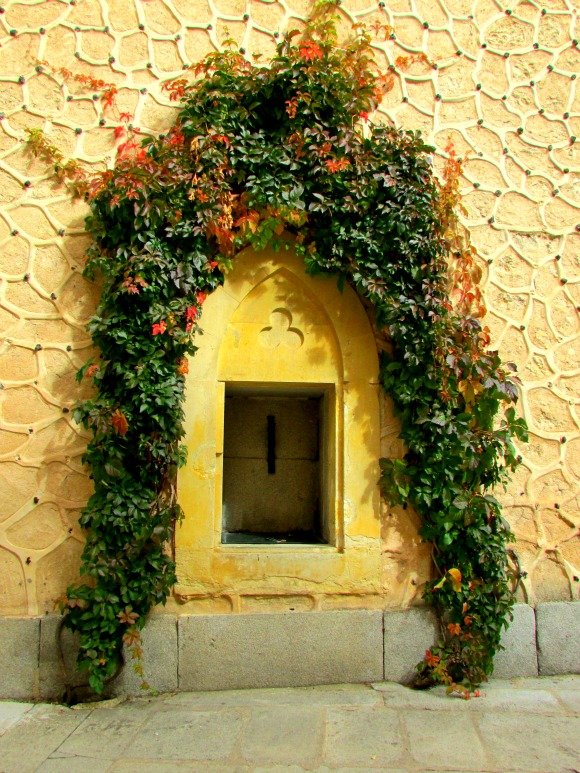

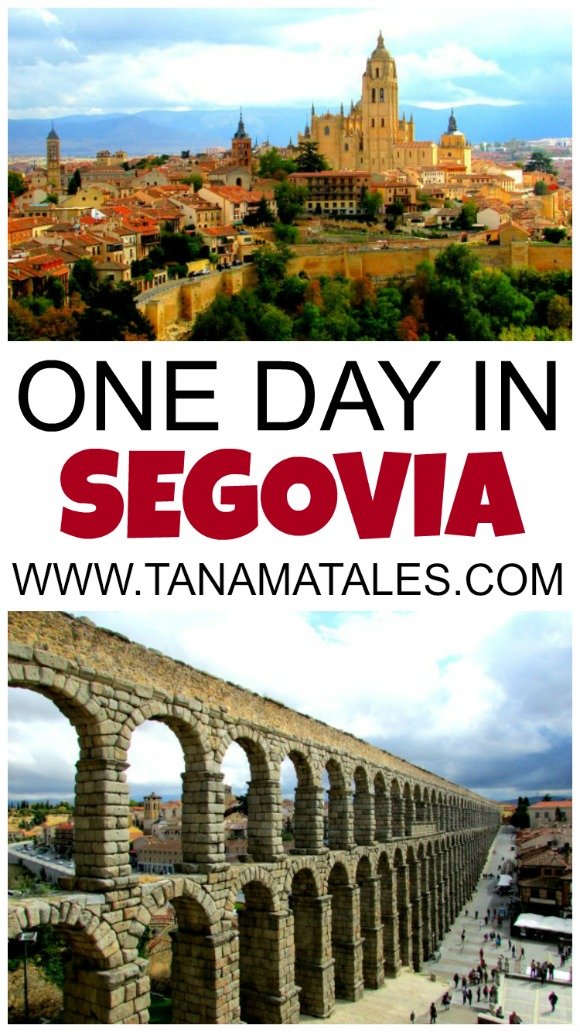
Comments
Post a Comment